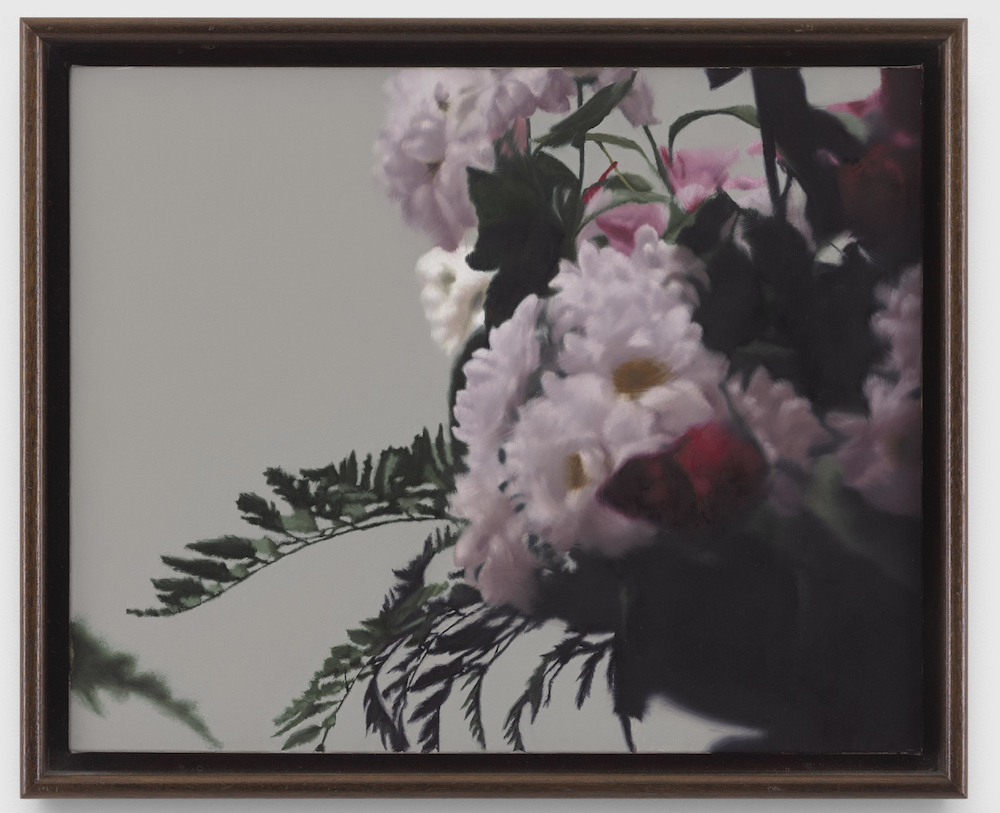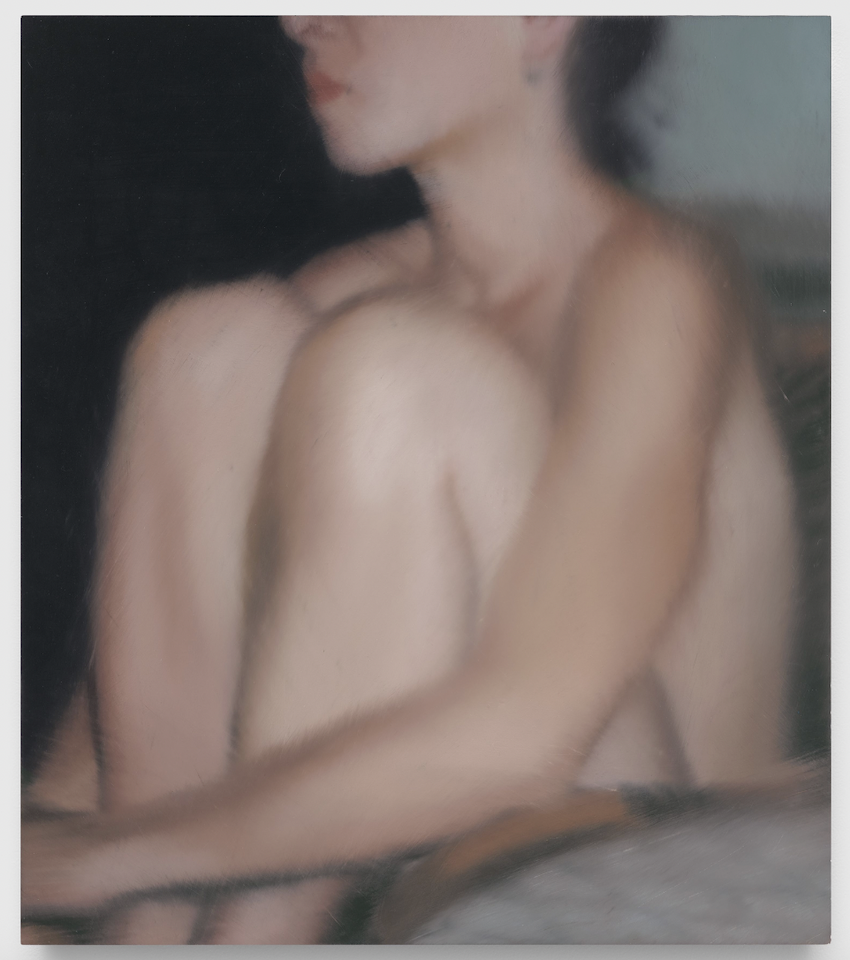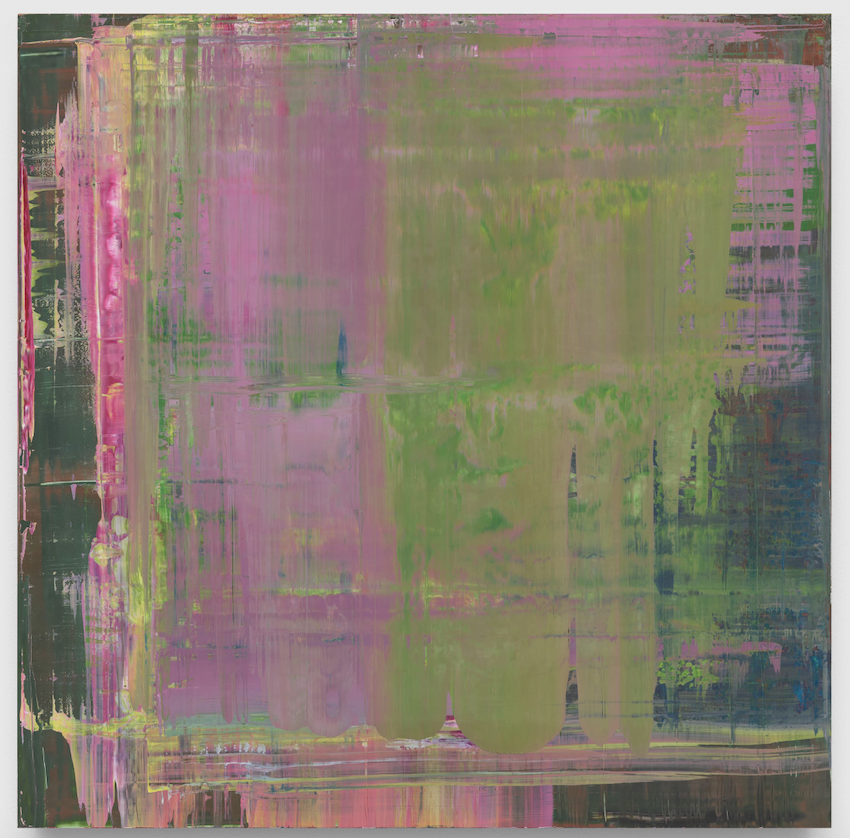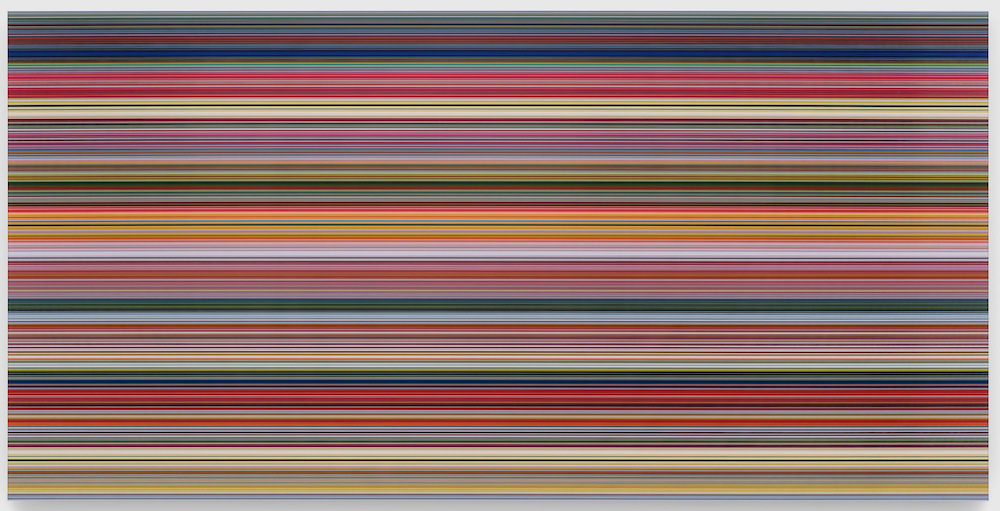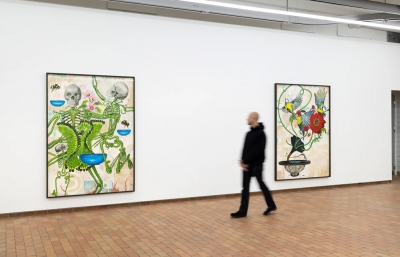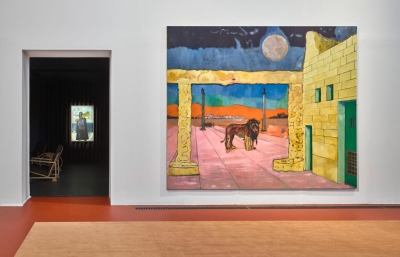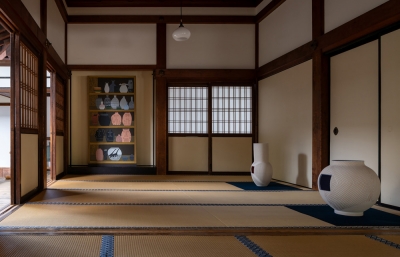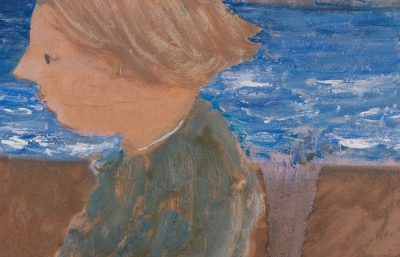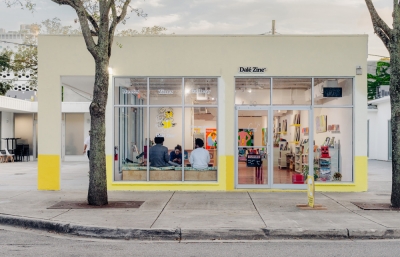David Zwirner is pleased to announce an exhibition of paintings, drawings, and glass installations by renowned German artist Gerhard Richter at the gallery’s Paris location. This is the artist’s third show with David Zwirner since the announcement of his representation in 2023, following solo presentations at the gallery’s locations in New York (2023) and London (2024). The exhibition coincides with a major retrospective of Richter’s work curated by Nicholas Serota and Dieter Schwarz at the Fondation Louis Vuitton in Paris, now on view.
Characterized by an impressive variation in scope, scale, and technique, the works on view in Paris collectively highlight Richter’s expansive understanding of the painted medium and his endlessly investigative approach to the process of artmaking itself. The exhibition opens with the artist’s 3 Scheiben (3 Panes of Glass), from 2023. Richter first began working with the medium of glass over half a century ago, with his landmark 1967 installation 4 Glasscheiben (4 Panes of Glass), which he conceived of as a response to The Large Glass (1915–1923) by Marcel Duchamp.
The present installation belongs to a later body of work comprising groups of freestanding transparent glass panes. When viewed head-on, the image visible through the glass becomes increasingly distorted, dimmed, and opaque as it passes through each successive panel, forming a potent corollary to the blurred effect of Richter’s photo paintings, which the artist began experimenting with in the 1960s.
Also on view are additional wall-mounted glass installations. As with all of Richter’s glass works, these pieces acknowledge and defy the expected artistic role of glass as a protective shield devoid of its own material presence, while also freeing it from its traditional modernist constraints as a setting within walls, vitrines, or cubes. The experience of beholding these works—along with the images seen on their surfaces—enacts a radical paradox in which reality is both rendered impassable through its physical mirroring and distortion, while also being perfectly emulated with an indelible proximity to the real world.
The exhibition includes a selection of Richter’s Fotobilder (Photo Paintings), such as Blumen (Flowers, 1992), Torso (1997), and Kl. Badende (Small Bather, 1994). Beginning as early as 1962, at the outset of his career, Richter made use of photographic imagery as the source material for his paintings. His first canvases depicted images taken from advertisements, the news media, and other mass-reproduced sources, in addition to personal family photographs and ordinary snapshots.
Deviating from traditional figurative painting, Richter typically blurs the depicted subjects or objects, in order to complicate the relationship between painting and photography. As art historian John T. Paoletti has observed, “Just as a photograph does not replicate the world which exists before the camera, neither do Richter's paintings replicate the photograph. Tellingly, Richter uses techniques stemming from photographic 'mistakes'—the out-of-focus image, the blur, the accidental or awkward snapshot detail—to comment on the artistic choices being made about what reality to present.”
Richter’s Abstrakte Bilder (Abstract Paintings) explore painting’s formal and conceptual possibilities from another angle. Carefully constructed and highly stratified in composition, these works use abstraction to foreground the sheer physical presence of paint and color—a method of artistic creation that is aleatory yet deliberately planned.
Among the Abstract Paintings on view in Paris is an example from 2001, which features intersecting swaths of vibrant pink, green, and golden yellow. With the expansive planes of harmonious color, the earlier works stand in contrast to Richter’s last oil paintings from 2015 to 2017, which are characterized by energetic markings laid atop one another in intricate, dimensional formations.
The exhibition at the Paris location coincides with the opening of a major solo presentation of Richter’s work at the Fondation Louis Vuitton. This exceptional retrospective—unmatched both in scale and in chronological scope—features 270 works stretching from 1962 to 2024, including oil paintings, glass and steel sculptures, pencil and ink drawings, watercolors, and overpainted photographs.



